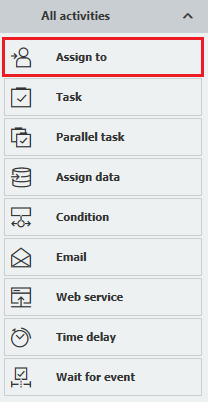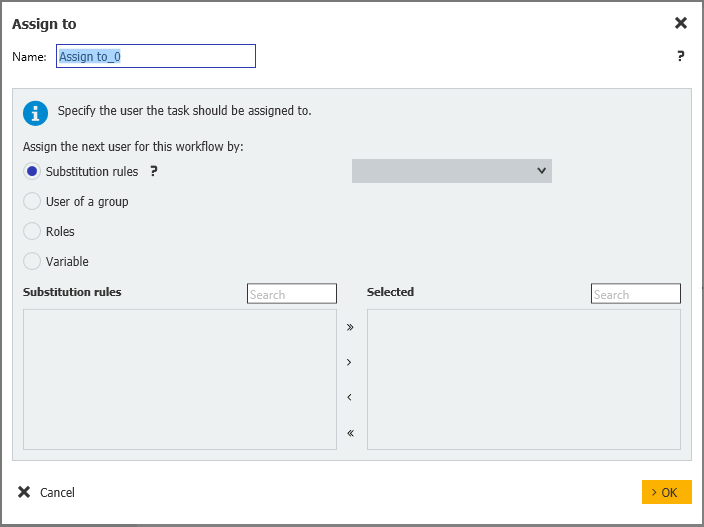When setting up a workflow, an essential step is to correctly assign tasks to specific colleagues. Here are a few things to keep in mind when doing so.
Anyone using DocuWare‘s Workflow Manager benefits from its transparency and clear structure: DocuWare shows you all your tasks in one comprehensive list – that is always automatically updated.

To make make sure a task makes its way to the right colleague who needs to work on it, the person who is acting as the designer of the workflow needs to assign it to the employees, either with the Assign to activity or within the Task activity. In the Workflow Designer, simply drag the activity into the flowchart of the workflow and a dialog for the settings opens. Here, we show Assign to as an example.
If a specific user must complete a task
For some tasks, a specific user may be responsible; for example, an employee who is solely responsible for checking in goods or signing off on delivery slips. If a task is only assigned to one user, then only this particular user needs to see it.
In another example, a workflow set up showing that HR guidelines were acknowledged, only individual employees are then allowed to confirm that they have read them.
Any employee with the same role can work on it
Other tasks can be handled by a certain type of employee – so not just one user, but multiple colleagues who have the same rights. So if you are assigning a task to a role, all users who have this role will receive and see the task. If one of them opens or completes the task, it disappears from the list of all other role owners. For example, there may be several colleagues who can tackle the task of checking vendors and itemized details in invoices.

There are four options for assigning a task or parallel task. Different settings are available depending on your selection.
Thanks to substitution rules, nothing gets left behind
Tasks can also be automatically forwarded to another user or role for processing, for example, because the person normally responsible is on vacation. You then set up a substitution rule containing all substitutes in a specific order, for example, for an invoice approval process.
If you have created and assigned a substitution rule for a task, only the first user (or role) sees the task at first. In the event the user or role cannot be reached and absence data is stored, the task is forwarded to the next in the sequence.
You can also define several rules at once, for example, for accounting, sales and HR. You store the rules in a substitution list, which you do in DocuWare Administration. You can then easily determine the correct rule from a selection list in the future.
You can also define several rules at once, for example, for accounting, sales and HR. You store the rules in a substitution list, which you do in DocuWare Administration. You can then easily determine the correct rule from a selection list in the future.
Furthermore, you can also use other variables to assign tasks to users, roles or substitutes.
By the way, a Controller can view the tasks of all users in a workflow. A Controller can also intervene in a process if the situation requires it.
Check out our Product Blog to find out more about the steps, or better, activities that you as a designer can integrate into a workflow.
The DocuWare Knowledge Center also offers many tips on all of the Workflow Designer’s features.
